Do you ever find yourself wanting to own a Persian cat but not really sure about the challenges that come with it? Well, you’re in luck because I’m here to give you all the details! In this article, we’ll dive into the challenges of owning a Persian cat and explore everything from their grooming needs to their potential health issues. By the end of this article, you’ll have a better understanding of what it takes to care for a Persian cat and be fully prepared for the joys and challenges that come along with it.
Let’s start with grooming. Persian cats have long, luxurious coats that require regular maintenance. This means daily brushing to prevent matting and tangles. And let me tell you, it’s no easy task. Persians are known for their thick fur, so be prepared to spend some quality time with a brush. But don’t worry, it’s not all work and no play! Many Persian cats actually enjoy the grooming process and see it as a bonding activity with their human. So, make sure you have some good grooming tools and be ready to give your Persian cat the love and attention they deserve.
Now, grooming is just the tip of the iceberg when it comes to owning a Persian cat. These beautiful felines are also prone to certain health issues, such as eye problems and respiratory difficulties. Their unique facial structure and long fur can make them more susceptible to eye infections and breathing issues. So, it’s important to keep a close eye on their health and be diligent about regular check-ups with the vet. But don’t worry, with proper care and attention, these challenges can be managed and your Persian cat can live a happy and healthy life.
So, there you have it! A sneak peek into the challenges of owning a Persian cat. But don’t worry, it’s not all bad. Despite these challenges, Persian cats are incredibly loving, affectionate, and make wonderful companions. In my upcoming posts, I’ll dive deeper into each of these topics and provide you with even more tips and advice on how to care for your Persian cat. So, stay tuned and get ready to become the best Persian cat owner you can be!
The Challenges of Owning a Persian Cat
Persian cats are one of the most beloved and recognizable cat breeds in the world. With their luxurious coats, distinctive facial features, and gentle personalities, they have captured the hearts of cat lovers everywhere. However, owning a Persian cat comes with its own set of challenges that potential owners should be aware of. In this article, we will explore the various challenges that come with owning a Persian cat and how to navigate them successfully.
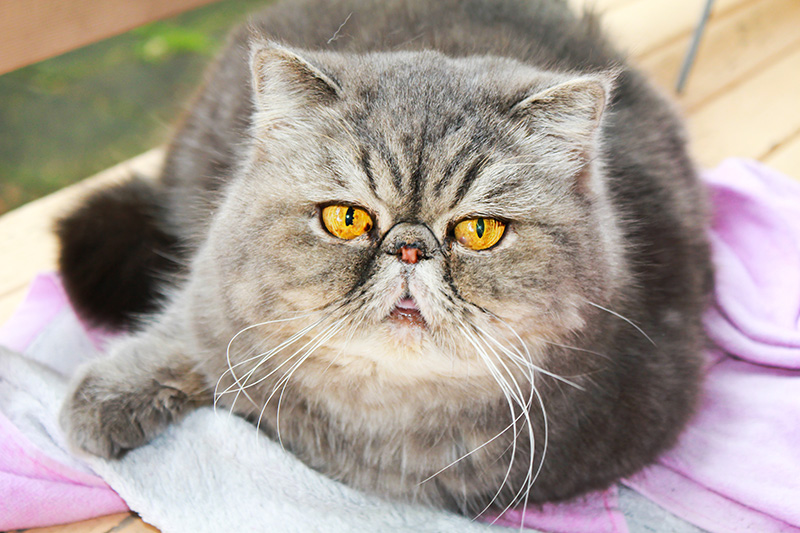
Origins of Persian Cats
The history of Persian cats dates back to ancient times. These cats are believed to have originated in Persia (modern-day Iran) and were brought to Europe by traders and explorers. They quickly gained popularity amongst European nobility and became a symbol of luxury and elegance. Today, Persian cats are recognized as a distinct breed by major cat associations worldwide.
Breed Development
Over the centuries, Persian cats underwent selective breeding to enhance their distinct characteristics, such as their thick, long, and silky coats, round faces, and short noses. Breeders focused on creating cats with a calm and affectionate temperament, making them ideal companions. However, this breeding process also resulted in some health issues that are prevalent in the breed today.
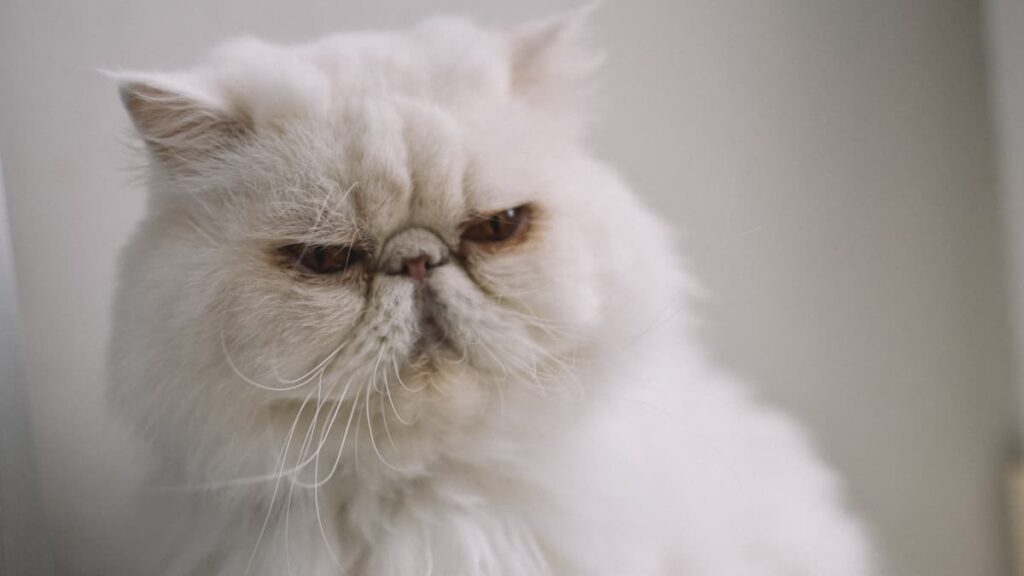
Popularity in Different Cultures
Persian cats have enjoyed widespread popularity in various cultures throughout history. In Europe, they were favored by royalty and depicted in paintings and tapestries. In Asia, they were treasured as sacred animals and often featured in ancient mythology. In modern times, Persian cats continue to captivate people from all walks of life, from celebrities to cat enthusiasts.
Physical Characteristics of Persian Cats
When it comes to physical characteristics, Persian cats are truly unique. Their most distinctive feature is their flat face, which gives them a uniquely adorable appearance. Their large, round eyes are often deep-set and expressive, adding to their charm. The Persian coat is long, thick, and requires meticulous grooming to keep it in top condition.
Distinctive Facial Features
The flat face of Persian cats, also known as brachycephalic, is a defining characteristic of the breed. While it contributes to their adorable appearance, it can also pose health risks. The flat face can cause respiratory problems, as the airways may become constricted, leading to difficulty breathing. It is important to monitor their breathing and seek veterinary care if any concerns arise.
Coat Colors and Patterns
Persian cats come in a wide range of coat colors and patterns. From solid-colored coats to bicolor, tabby, and calico patterns, there is a Persian cat to suit every preference. Some of the most popular colors include white, black, blue, cream, red, and silver. The coat requires daily grooming to prevent tangles and matting, which can be time-consuming.
Body Structure
Aside from their facial features and coat, Persian cats have a sturdy and well-built body structure. They have a compact and muscular build, with a broad chest and short legs. This body structure contributes to their graceful and elegant movements. However, it is important to monitor their weight and ensure they maintain a healthy and balanced diet to prevent obesity-related health issues.
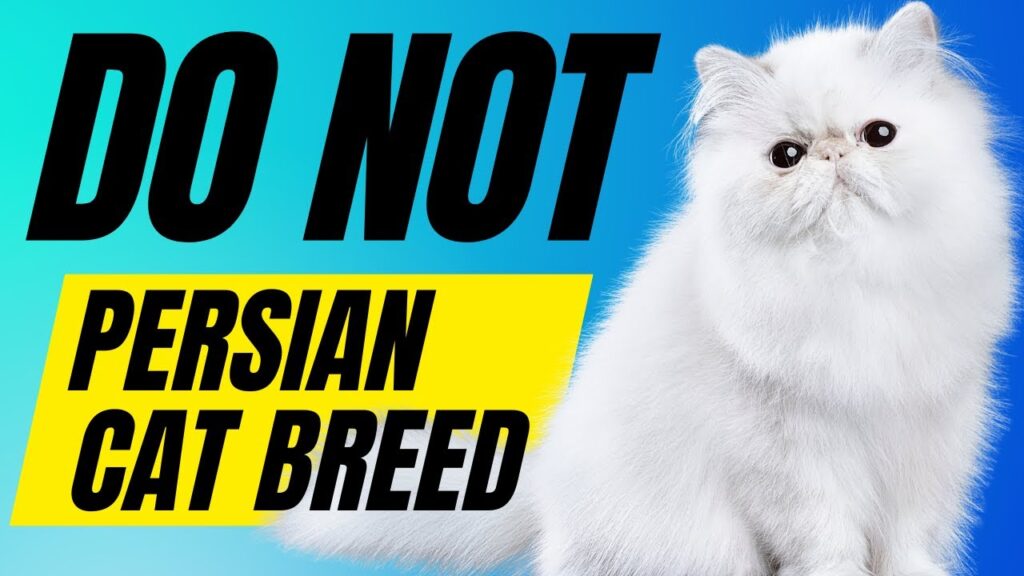
Personality Traits of Persian Cats
Persian cats are known for their calm and gentle temperament. They are typically laid-back and enjoy a peaceful and quiet environment. They are not as active and playful as some other cat breeds, preferring to curl up on a cozy spot or perch on a window sill to observe their surroundings. Persian cats thrive on human companionship and enjoy being the center of attention.
Temperament
Persian cats are known for their sweet and affectionate nature. They form deep bonds with their owners and enjoy being near them. They are not typically demanding or vocal but will appreciate your attention and gentle affection. Due to their calm nature, they are often an excellent choice for families with children or individuals looking for a companion pet.
Social Behavior
While Persian cats enjoy human company, they can also be independent and enjoy their solitude. They are not typically prone to excessive meowing or attention-seeking behaviors. However, it is important to provide them with ample social interaction and mental stimulation to prevent boredom and loneliness. Interactive toys, scratching posts, and designated playtime can help keep them entertained and happy.
Interacting with Other Pets
Persian cats generally get along well with other pets, including dogs and other cats. However, proper introductions and gradual familiarization are essential when introducing a Persian cat to a new pet. It is recommended to supervise their interactions initially and provide separate safe spaces for each pet until they become comfortable with one another.
Grooming and Care for Persian Cats
One of the biggest challenges of owning a Persian cat is their grooming requirements. Their long and luxurious coats require daily care to keep them tangle-free and in top condition. Additionally, they are prone to certain health issues that require regular monitoring and care.
Daily Grooming Routine
To maintain a Persian cat’s coat, daily grooming is essential. This includes brushing their fur to remove tangles and prevent matting. A combination of wide-toothed and fine-toothed combs can be used to gently work through any knots. Special attention should be given to the areas prone to matting, such as the underarms and behind the ears. Regular grooming not only keeps their coat healthy but also helps strengthen the bond between owner and cat.
Bathing and Brushing
In addition to brushing, Persian cats also require regular baths to keep their coat clean and free from oils. A gentle cat-specific shampoo should be used, and care should be taken to avoid getting water in their ears or eyes. After a bath, the coat should be thoroughly dried to prevent skin issues. Regular brushing after bathing helps to prevent matting and keeps their coat looking its best.
Preventing Hairballs
Due to their long fur, Persian cats are prone to hairballs. Hairballs occur when cats groom themselves and ingest loose hair, which then accumulates in the digestive system. This can lead to vomiting and discomfort. To prevent hairballs, regular brushing helps to remove loose hair and reduce the amount of hair ingested during grooming. Additionally, commercial cat hairball remedies can be given as directed by a veterinarian.
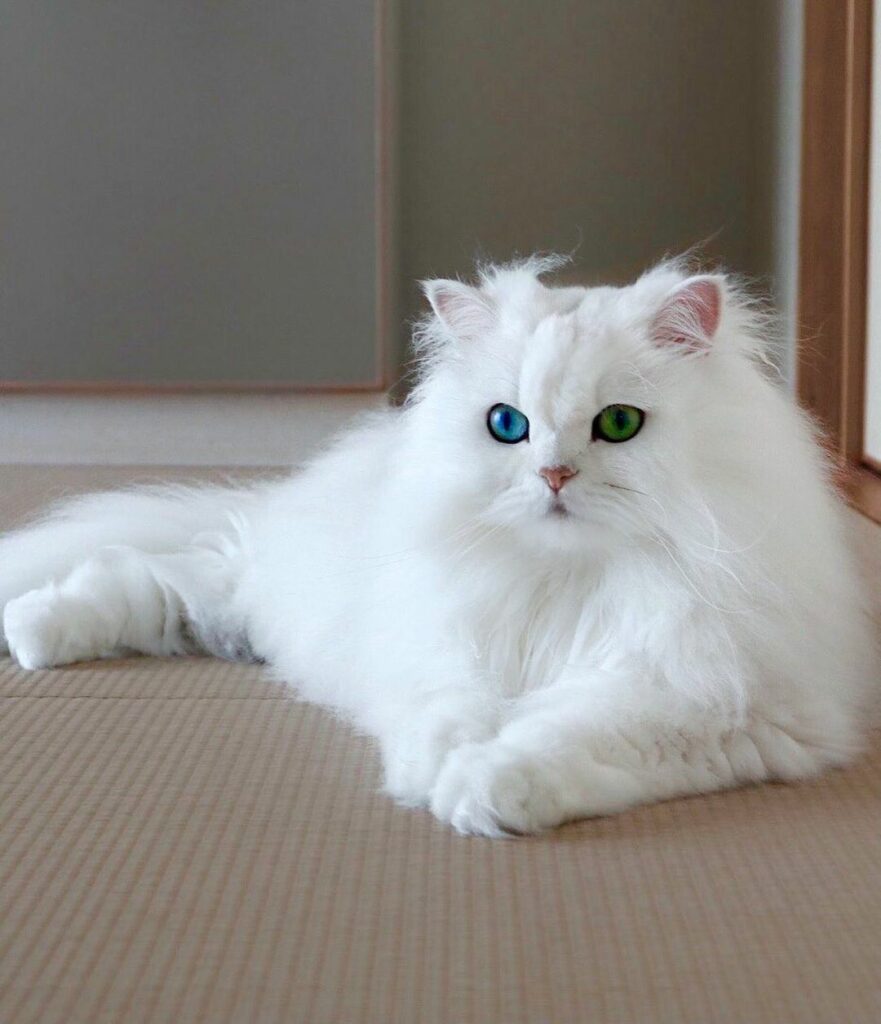
Health Issues Common in Persian Cats
While Persian cats are generally healthy animals, they are predisposed to certain health issues that potential owners should be aware of. Regular veterinary check-ups and preventive care are essential to ensure their well-being.
Respiratory Problems
The flat face of Persian cats can lead to respiratory issues. They may experience difficulty breathing, snoring, or wheezing. It is important to monitor their breathing and seek veterinary care if any concerns arise. Some Persian cats may require surgical correction for conditions such as brachycephalic airway syndrome.
Eye and Ear Conditions
Persian cats are prone to certain eye and ear conditions due to their unique facial structure. Their large, round eyes are susceptible to conditions such as cherry eye, corneal ulcers, and excessive tearing. Regular eye examinations by a veterinarian can help detect and treat these issues promptly. Additionally, their small and flat ears can make them more susceptible to ear infections, requiring regular cleaning and monitoring.
Genetic Diseases
Persian cats have a higher incidence of certain genetic diseases compared to other cat breeds. Polycystic kidney disease (PKD) is one of the most common genetic disorders seen in Persians. Responsible breeders screen their cats for PKD and other genetic diseases before breeding to minimize the risk of passing these conditions on to the offspring. Potential owners should inquire about the health history of a Persian cat before bringing them home.
Feeding and Nutrition for Persian Cats
Proper nutrition plays a crucial role in the overall health and well-being of Persian cats. Providing them with a balanced diet that meets their specific nutritional needs is essential for their long-term health.
Choosing the Right Food
When selecting food for a Persian cat, it is important to choose a high-quality cat food that is specifically formulated for their unique needs. Persian cats have a flat face, which can make it challenging for them to pick up small kibble. Wet or moist cat food may be a better option to ensure they are able to eat comfortably. Additionally, their diet should consist of high-quality proteins, appropriate levels of fats, and controlled carbohydrates.
Portion Control
Due to their sedentary nature, Persian cats are prone to weight gain and obesity. Portion control is essential to prevent excessive weight gain and maintain a healthy body condition. Consult with a veterinarian to determine the appropriate portion size based on your cat’s age, weight, and activity level. Feeding multiple small meals throughout the day can help prevent overeating and provide mental stimulation.
Special Dietary Needs
Some Persian cats may require special dietary considerations based on their health conditions. For example, cats with urinary issues may benefit from a diet formulated to support urinary health. Additionally, senior Persian cats may require a diet that addresses age-related issues such as joint health and weight management. Consult with a veterinarian to determine the best diet for your Persian cat’s specific needs.
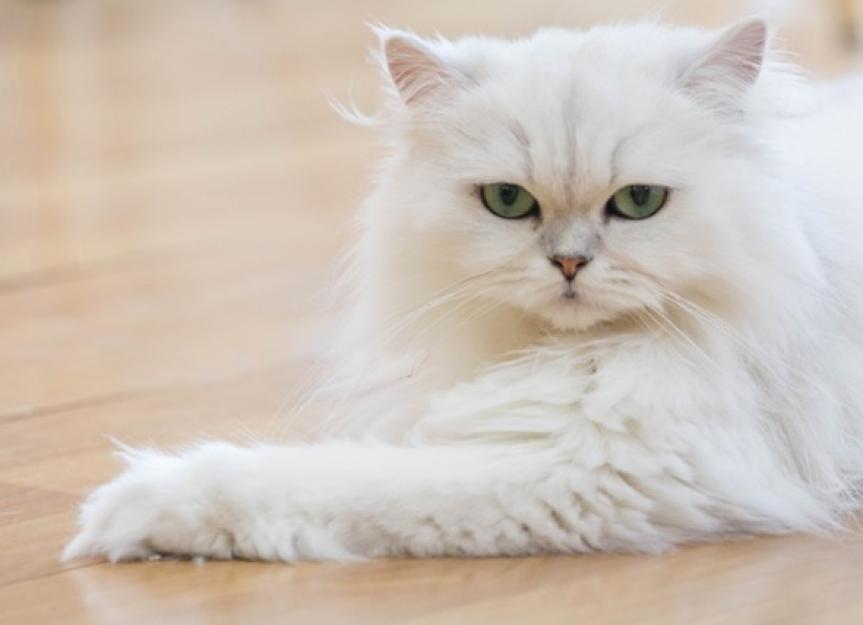
Training and Behavior Tips for Persian Cats
While Persian cats are generally well-behaved and easygoing, they can benefit from basic training and socialization to ensure they are well-adjusted and obedient companions.
Litter Box Training
Litter box training is essential for all cats, including Persian cats. They should be provided with a clean litter box in a quiet and easily accessible location. Introduce your Persian cat to the litter box early on and gently guide them to use it after meals and naps. Positive reinforcement, such as treats and praise, can be used to encourage proper litter box usage.
Scratching Behavior
Like all cats, Persian cats have natural scratching instincts. To prevent them from damaging furniture and belongings, provide them with appropriate scratching posts and surfaces. Encourage them to use the scratching posts by placing treats or catnip nearby. Regular nail trims can also help minimize the damage caused by scratching.
Teaching Basic Commands
While Persian cats are not typically as trainable as dogs, they can still learn basic commands and tricks with patience and positive reinforcement. Start with simple commands such as “sit” and “come” and reward them with treats and praise when they successfully follow the command. Training sessions should be short and engaging to keep them interested and motivated.
Exercise and Enrichment for Persian Cats
Persian cats are not known for their high energy levels, but they still require mental and physical stimulation to prevent boredom and ensure their overall well-being.
Indoor Playtime Ideas
Persian cats are typically indoor cats and need access to stimulating activities to keep them entertained. Interactive toys such as puzzle feeders, laser pointers, and feather wands can provide mental and physical stimulation. Create a designated play area with scratching posts, climbing trees, and tunnels to encourage exercise and exploration.
Interactive Toys
Interactive toys can be a great way to keep Persian cats engaged and mentally stimulated. Treat-dispensing toys or puzzle toys that require problem-solving skills can provide hours of entertainment. Rotate the toys regularly to prevent boredom and ensure continued interest.
Creating a Cat-friendly Environment
Creating a cat-friendly environment is crucial for the well-being of Persian cats. Provide them with cozy spots to curl up and observe their surroundings, such as cat beds or window perches. Set up vertical spaces such as cat trees or shelves to allow them to climb and explore. Additionally, consider installing a cat-friendly window with a bird feeder outside to provide entertainment and stimulation.
Traveling with Persian Cats
While Persian cats are generally homebodies, there may be occasions where you need to travel with them. Whether it’s a visit to the veterinarian or a family vacation, proper preparation and safety measures are essential.
Preparing for Trips
When traveling with a Persian cat, ensure they are comfortable and secure in a suitable carrier. The carrier should be well-ventilated and large enough for them to stand up, turn around, and lie down comfortably. Familiarize them with the carrier in advance by leaving it open in their living space and placing treats and toys inside. This will help reduce stress and anxiety during travel.
Travel Safety Tips
When traveling in a vehicle, secure the carrier in a stable position to prevent it from moving. Avoid exposing the carrier to extreme temperatures, whether it’s too cold or too hot. During long trips, provide a litter box, food, water, and familiar bedding in the carrier to ensure their comfort. If traveling by air, check with the airline for specific requirements and regulations regarding pet travel.
Adapting to New Environments
Upon arriving at a new destination, allow your Persian cat time to adjust to the new environment. Set up a designated safe space with familiar items such as their bed, litter box, and toys. Gradually introduce them to the new surroundings, allowing them to explore at their own pace. Provide reassurance and attention to make them feel secure in their new environment.
Breeding and Caring for Persian Kittens
Breeding Persian cats should only be done by experienced and responsible breeders who prioritize the health and well-being of the cats. Proper prenatal and postnatal care is essential to ensure healthy kittens.
Understanding the Breeding Process
Breeding Persian cats involves careful selection and planning to ensure the best possible outcomes. Responsible breeders consider the health history, genetic testing, and temperament of the parent cats before breeding. They also provide optimal care for the pregnant cat, including nutrition, veterinary check-ups, and a comfortable environment.
Prenatal and Postnatal Care
During pregnancy, the pregnant cat should be provided with a balanced diet and regular veterinary care to monitor her health and the development of the kittens. After birth, the kittens require round-the-clock care, including proper nutrition, warmth, socialization, and regular veterinary check-ups. Responsible breeders ensure that kittens are placed in loving and suitable homes.
Socializing Kittens
Socialization is crucial for kittens to develop into well-adjusted and confident cats. Provide them with early and positive social experiences by exposing them to various people, sounds, and environments. Gentle handling and playtime are essential to ensure they grow up to be sociable and friendly companions.
Persian Cats in Art and Literature
Persian cats have made their mark in art and literature throughout history. They have been depicted in paintings, sculptures, and literary works, capturing the imagination of artists and writers alike.
Depictions in Paintings
Persian cats have been a subject of fascination for many artists throughout history. They have been immortalized in various paintings, including the works of famous artists such as Jean-Baptiste Perronneau, Pierre-Auguste Renoir, and Édouard Manet. These artistic depictions showcase the beauty and elegance of the breed, making them a popular subject in the art world.
Persian Cats in Ancient Mythology
In ancient mythology, Persian cats held a special place. They were often associated with divinity and revered as sacred animals. In Egyptian mythology, they were considered the guardians of the underworld. Persian cats were also held in high regard in ancient Persia, where they were considered symbols of luxury and prosperity.
Literary References
Persian cats have been mentioned in several literary works, adding to their charm and mystique. From T.S. Eliot’s “Old Possum’s Book of Practical Cats” to Edgar Allan Poe’s “The Black Cat,” these feline creatures have inspired countless authors. Their unique appearance and regal presence often make them ideal characters in literature.
Famous Persian Cats in History
Throughout history, Persian cats have found themselves in the company of royalty and celebrities. From beloved pets to celebrated feline stars, these cats have made their mark on the world.
Notable Persian Cats in Royalty
Persian cats have been favored by royalty for centuries. Queen Victoria of England is known to have been a cat lover and had several Persian cats in her royal household. Princess Anne of England is also a fan of the breed and has owned several Persian cats throughout her life.
Celebrity-owned Persian Cats
In the world of celebrities, Persian cats have a special place. Throughout history, famous individuals such as Marilyn Monroe, Elizabeth Taylor, and Freddie Mercury have owned and adored Persian cats. Their affectionate and elegant nature makes them the perfect companions for those in the spotlight.
Feline Stars
Persian cats have also left their mark in the entertainment industry. Choupette, the famous cat owned by fashion designer Karl Lagerfeld, gained fame and fortune with her luxurious lifestyle. From posing for high-end fashion shoots to having her own social media accounts, Choupette became a feline celebrity in her own right.
Persian Cat Shows and Competitions
Persian cat shows and competitions provide a platform for breeders and enthusiasts to showcase the beauty and quality of their cats. These events follow strict rules and judging criteria to select the best representatives of the breed.
Rules and Judging Criteria
Persian cat shows are governed by various cat associations and follow specific rules and regulations. Judges evaluate the cats based on their adherence to the breed standard, including the coat quality, body structure, and overall appearance. Each cat is individually examined, and the judge compares them against the ideal characteristics for the breed.
Different Show Categories
Persian cat shows feature different categories for various coat colors and patterns. These categories provide a fair platform for different cats to compete against others with similar characteristics. Participants showcase their cats and compete for titles such as Best in Show, Supreme Grand Champion, and Regional Winner.
Preparing for a Show
Preparing a Persian cat for a show requires meticulous grooming and care. The coat should be in top condition, free from tangles and matting. Show participants often dedicate hours to grooming, ensuring the coat is well-maintained and the cat looks its best. Professional handlers may be hired to present the cat during the show, as their expertise can greatly enhance the cat’s chances of winning.
Conclusion
Owning a Persian cat is a wonderful experience, but it does come with its unique challenges. From the daily grooming requirements to potential health issues, responsible ownership involves a commitment to their care and well-being. However, the joys and rewards of having a loving and charming Persian cat as a companion far outweigh the challenges. By understanding their needs, providing proper care, and creating a nurturing environment, owning a Persian cat can be a truly enriching and fulfilling experience.
Common Questions About Persian Cats:
-
How often do Persian cats need to be groomed?
- Persian cats require daily grooming to keep their coats tangle-free and in top condition.
-
Are Persian cats prone to health problems?
- Persian cats are predisposed to certain health issues, such as respiratory problems and eye conditions. Regular veterinary check-ups are essential to monitor their health.
-
Can Persian cats live with other pets?
- Persian cats generally get along well with other pets, but proper introductions and gradual familiarization are important.
-
What do Persian cats eat?
- Persian cats should be fed a balanced diet of high-quality cat food that meets their specific nutritional needs.
-
Are Persian cats easy to train?
- Persian cats can be trained to learn basic commands and behaviors with patience and positive reinforcement.
-
How much exercise do Persian cats need?
- Persian cats are generally less active than some other breeds, but they still require mental and physical stimulation to prevent boredom and ensure their overall well-being.
-
Do Persian cats like to travel?
- Persian cats are generally homebodies but can adapt to travel if properly prepared and provided with a secure and comfortable carrier.
-
Can Persian cats be bred at home?
- Breeding Persian cats should only be done by experienced and responsible breeders who prioritize the health and well-being of the cats.
-
Do Persian cats have any historical significance?
- Persian cats have a rich history and have been treasured by royalty and depicted in art and literature throughout the ages.
-
Can Persian cats participate in cat shows?
- Persian cats can participate in cat shows and competitions, where they are judged based on specific breed standards and categories.